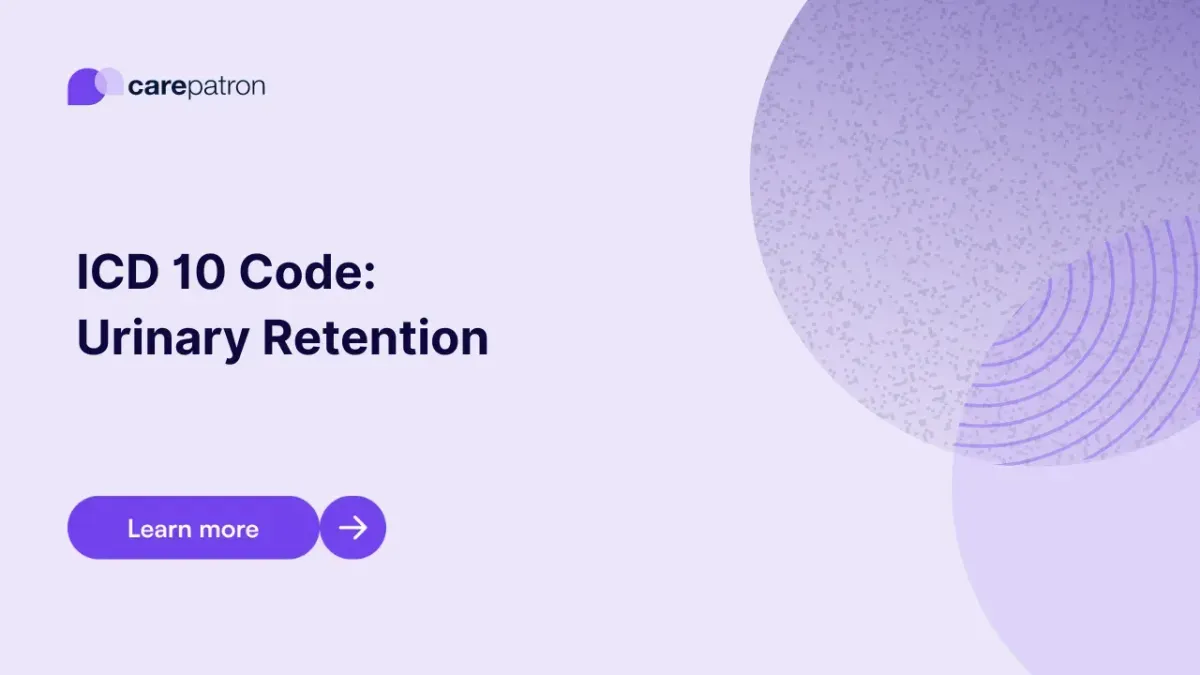
Urinary Retention ICD-10-CM Codes
Learn about the urinary retention ICD-10-CM codes you can use through this guide.
Use Code
Commonly asked questions
Once you’ve determined the cause of the patient’s urinary retention, you can use a urinary retention ICD code.
Yes, the specific codes for urinary retention are billable. However, some codes may not be used as the principal diagnosis.
Common treatments include inserting a catheter or stent, urethral dilation, surgery, medication, and lifestyle changes.
EHR and practice management software
Get started for free
*No credit card required
Free
$0/usd
Unlimited clients
Telehealth
1GB of storage
Client portal text
Automated billing and online payments
